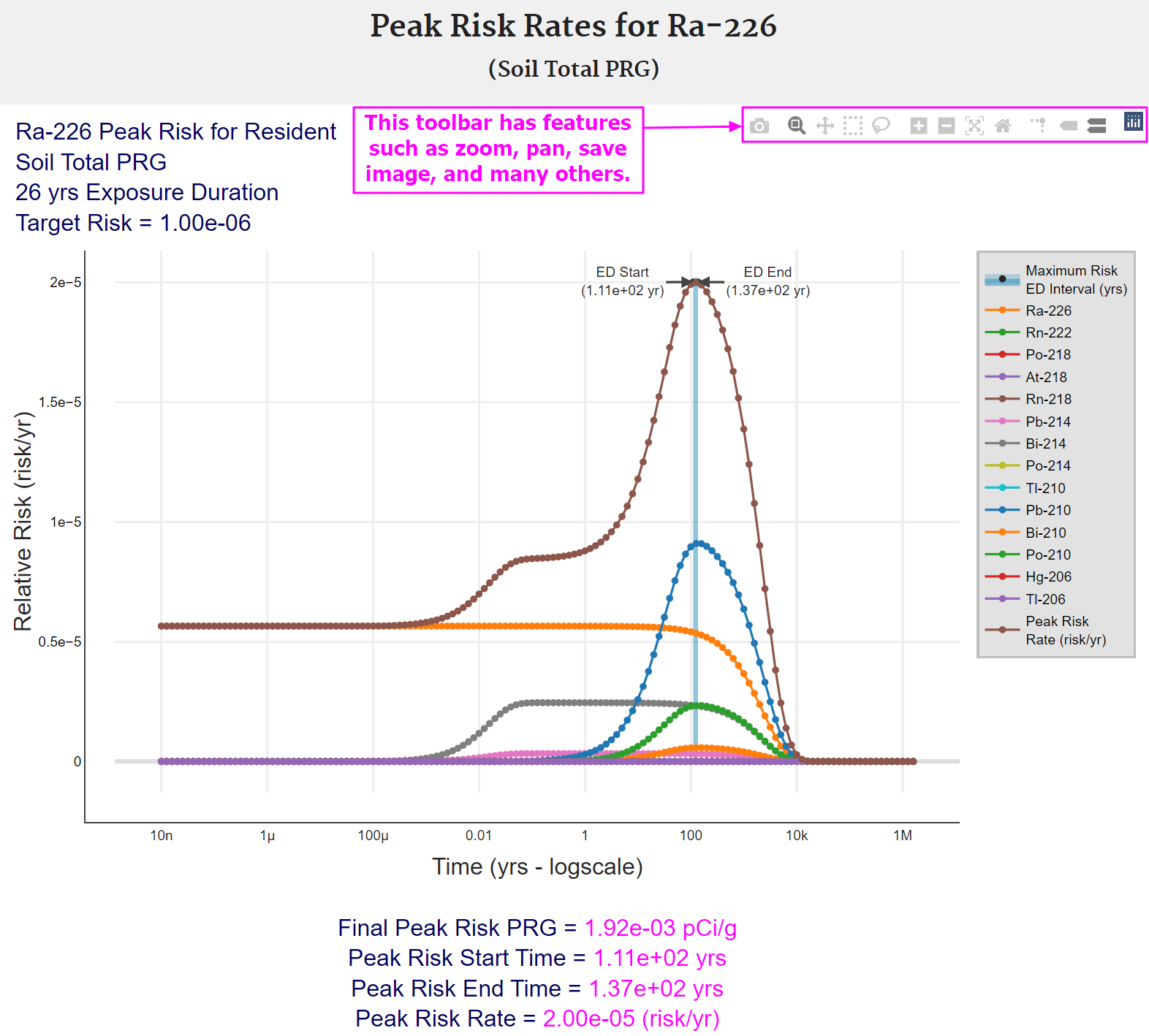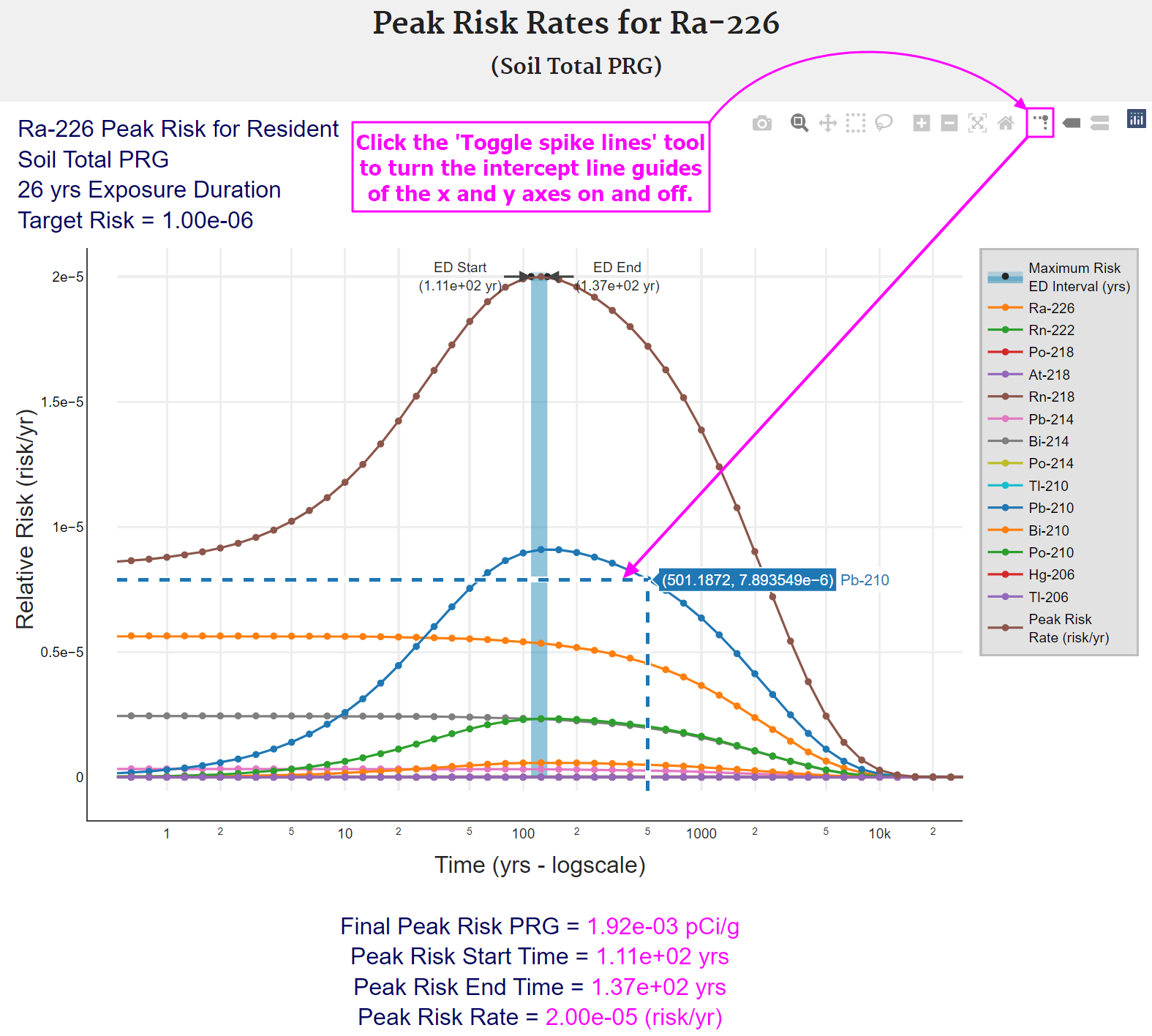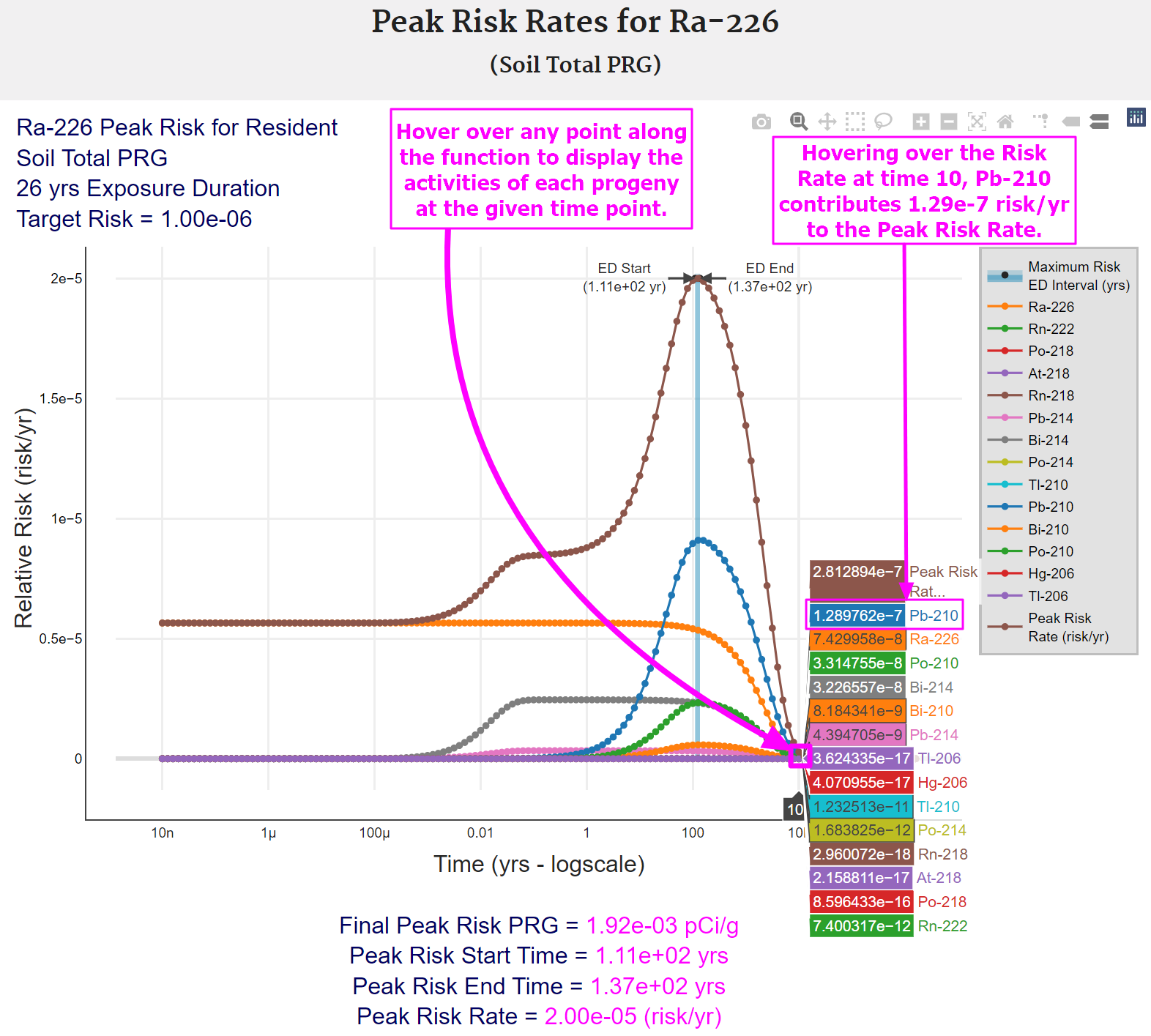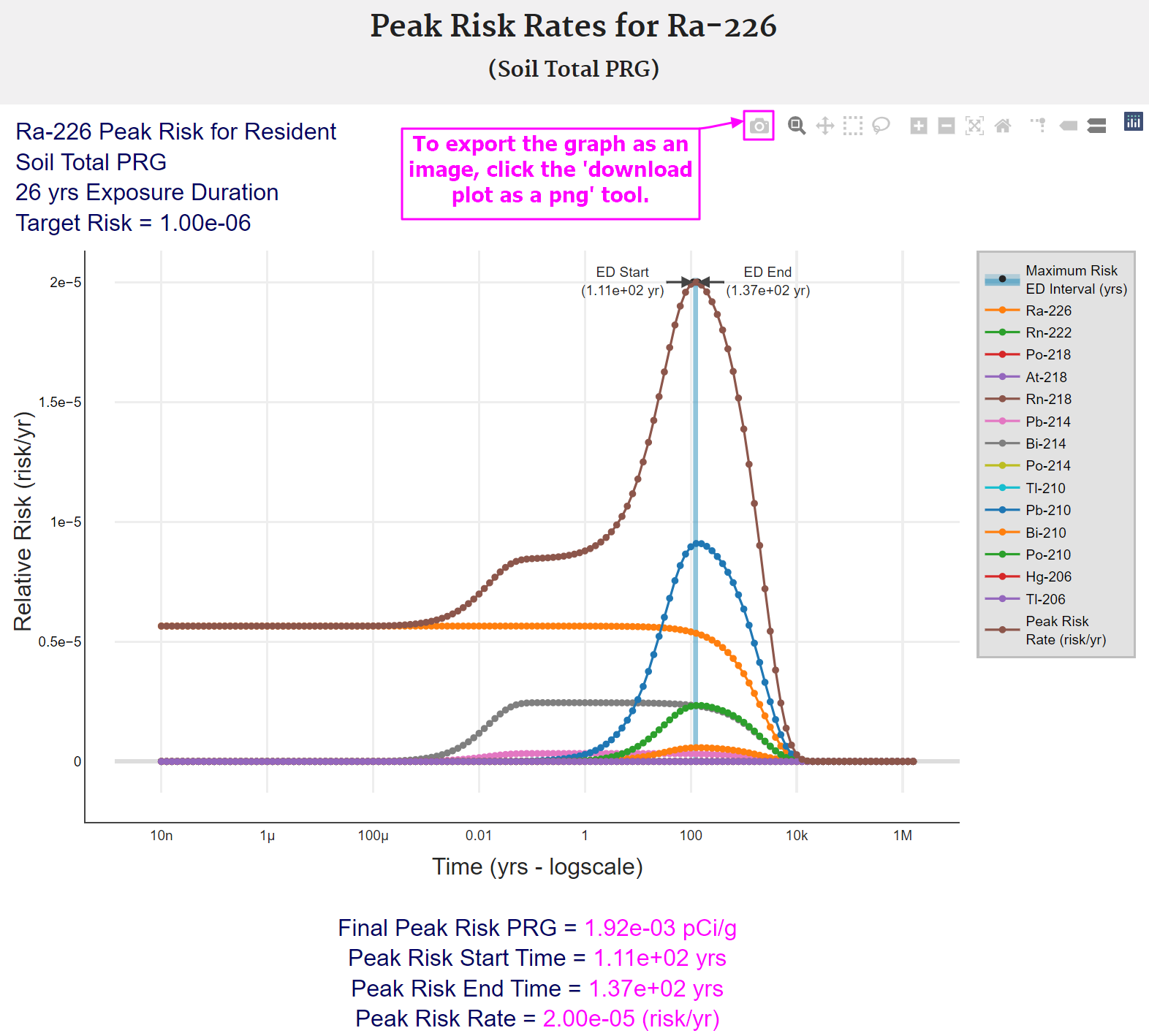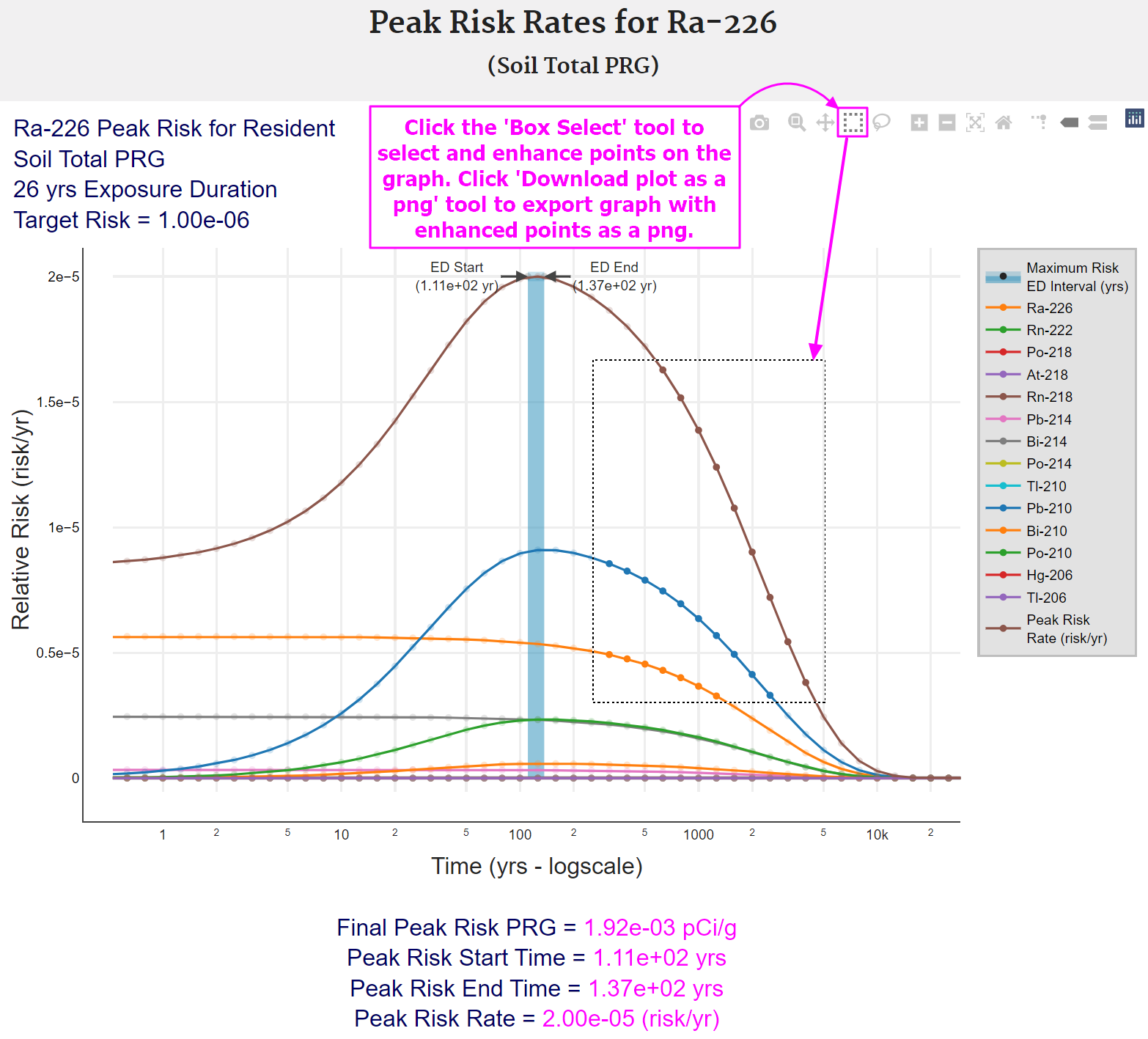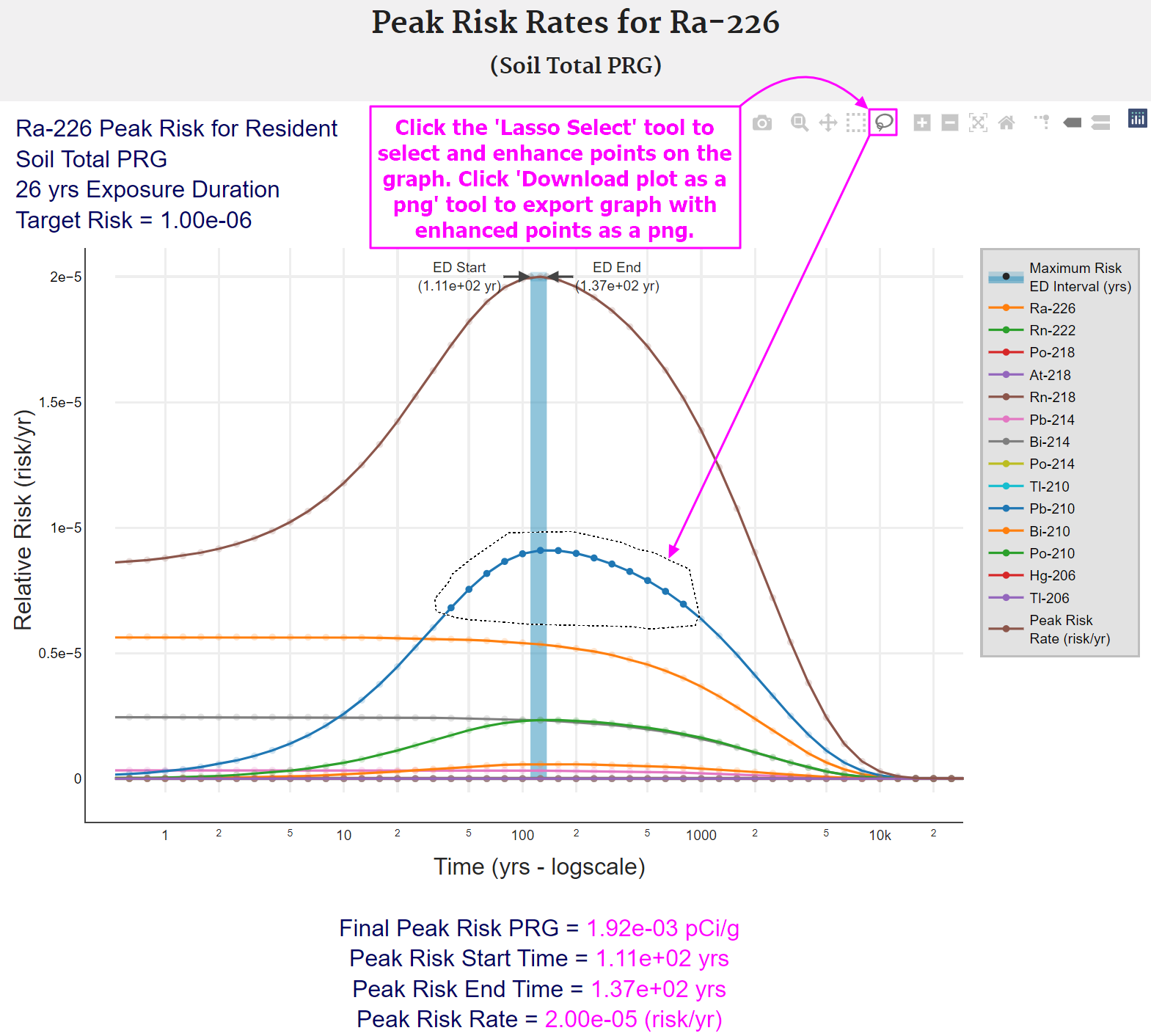Risk Assessment
Peak PRG Supplemental User's Guide
Welcome to the EPA's "Preliminary Remediation Goals for Radionuclide Contaminants at Superfund Sites" (PRG) supplemental user's guide for calculating PRGs based on the time period of peak risk after decay and progeny ingrowth. Below you will find language describing the peak PRG Output Option that will be inserted into the PRG Calculator User's Guide when the peak PRG option becomes publicly available. This ORNL Technical Memorandum offers explanation of the derivation of the peak PRGs.
2.2.1 PRG Output Option #1: Assumes period of peak risk (with decay and progeny ingrowth)
The peak PRG is calculated for the time period when the parent and progeny activities present the most risk. When a single isotope is selected, the calculator identifies all the progeny in the chain. The PRGs for each daughter are combined with the parent on a fractional basis. The fractional basis is determined by branching fractions, where a progeny may decay into more than one isotope. The PRG provided in the output is the inverse sum of the reciprocal PRGs of the parent and all the progeny present at the period of peak risk. All the PRG equation images are presented without a radioactive decay term; however, decay and ingrowth is included in this PRG option.
The Peak Risk PRG, when being calculated, tool uses a Bateman solver to determine the parent and progeny activities out to billions of years. This isotopic activity curve is then converted to risk and another routine selects the time period with the most risk from parent and progeny and determines the parent activity (PRG) that would represent the target risk. Users should note that for long-lived isotopes, that have a peak risk that begins in the future, progeny are likely already ingrown and the SE PRGs may be appropriate.
When the peak risk PRG output option is selected, the PRG Calculator shows the individual progeny contributions for the PRG output. Forward risk calculations are also available for this output option.
The main PRG user's guide describes the land uses, presents the default exposure parameters, and gives the equation images.
External Peer Review of the Peak PRG Calculator
July 26, 2019
Peer Review of EPA PRG Calculator draft revisions, email transmitting comments from David Hayes (U.S. Army Corps of Engineers).

